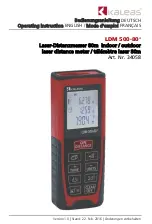
4-46
PQM Power Quality Meter
GE Power Management
4.5 S4 ALARMS/CONTROL
4 PROGRAMMING
4
It is generally desirable for a system operator to maintain the power factor as close to unity as possible (that is,
to make the real power of the system as close as possible to the apparent power) to minimize both costs and
voltage excursions. On dedicated circuits such as some large motors, with a near-fixed load, a capacitor bank
may be switched on or off with the motor to supply leading vars to compensate for the lagging vars required by
the motor. Since the power factor is variable on common non-dedicated circuits, it is advantageous to compen-
sate for low (lagging) power factor values by connecting a capacitor bank to the circuit when required. The
PQM provides power factor monitoring and allows two stages of capacitance switching for power factor com-
pensation.
Figure 4–29: CAPACITOR BANK SWITCHING
The PQM calculates the average power factor in the three phases, according to the following equation:
Two independent "elements" are available for monitoring power factor, POWER FACTOR 1 and POWER FAC-
TOR 2, each having a pickup and a dropout level. For each element, when the measured power factor is equal
to or becomes more lagging than the pickup level (i.e. numerically less than), the PQM will operate a user-
selected output relay. This output can be used to control a switching device which connects capacitance to the
circuit, or to signal an alarm to the system operator. After entering this state, when the power factor becomes
less lagging than the power factor dropout level for a time larger than the set delay, the PQM will reset the out-
put relay to the non-operated state.
Both power factor 1 and 2 features are inhibited from operating unless all three voltages are above 20% of
nominal and one or more currents is above 0. Power factor 1 and 2 delay timers will be allowed to time only
when the 20% threshold is exceeded on all phases (and, of course, only while the power factor remains out-
side of the programmed pickup and dropout levels). In the same way, when a power factor condition starts the
power factor 1 or 2 delay timer, if all three phase voltages fall below the 20% threshold before the timer has
timed-out, the element will reset without operating. A loss of voltage during any state will return both power fac-
tor 1 and 2 to the reset state.
Average Power Factor
Total 3-phase Real Power
Total 3-phase Apparent Power
---------------------------------------------------------------------------------
=
Summary of Contents for Power Quality Meter Series
Page 2: ......
Page 4: ......
Page 10: ...vi PQM Power Quality Meter GE Power Management TABLE OF CONTENTS ...
Page 46: ...2 22 PQM Power Quality Meter GE Power Management 2 2 ELECTRICAL 2 INSTALLATION 2 ...
Page 56: ...3 10 PQM Power Quality Meter GE Power Management 3 4 DEFAULT MESSAGES 3 OPERATION 3 ...
Page 166: ...6 20 PQM Power Quality Meter GE Power Management 6 6 POWER ANALYSIS 6 SOFTWARE 6 ...
Page 274: ...B 4 PQM Power Quality Meter GE Power Management B 1 TABLES AND FIGURES APPENDIXB B ...
Page 276: ...C 2 PQM Power Quality Meter GE Power Management C 1 PQM WARRANTY APPENDIXC C ...
Page 281: ...GE Power Management PQM Power Quality Meter NOTES ...
















































